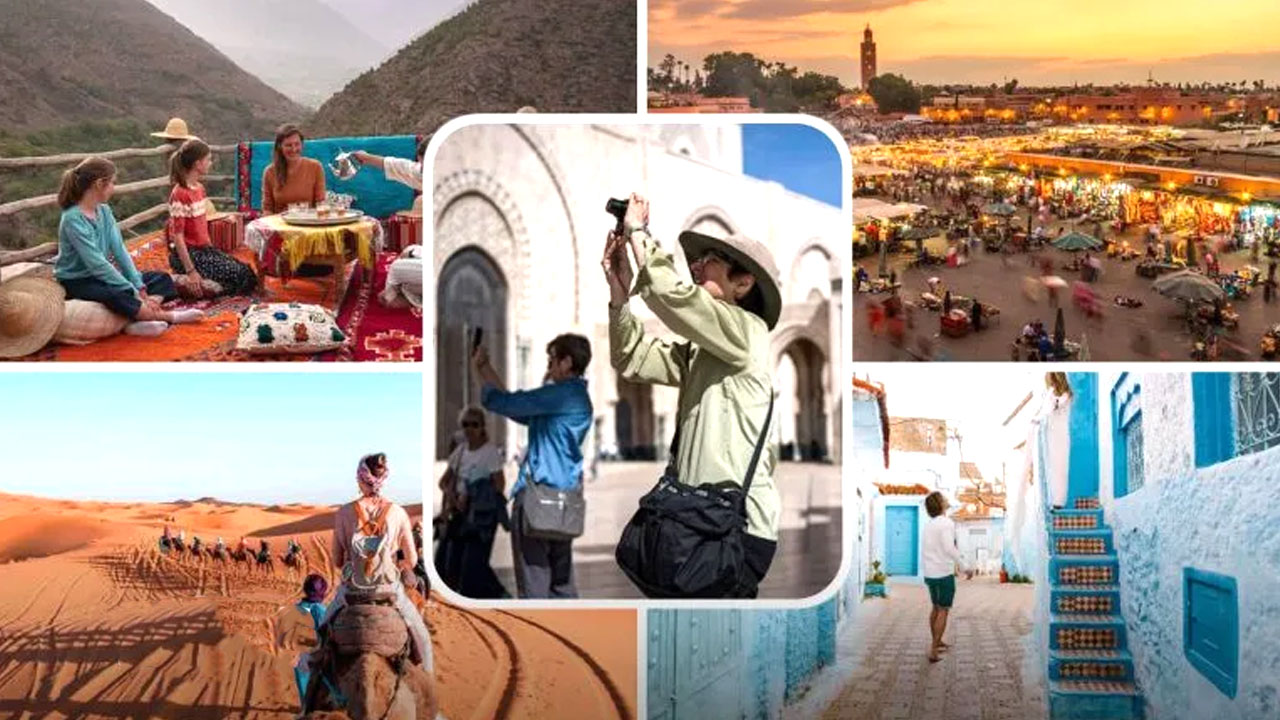
After breakfast, your guide will meet you at the hotel for a full-day guided tour of Marrakech.
Marrakech was founded in 1062 by one of the chieftains of the Almoravid king Youssuf Ibn Tashfin.
The Almoravids were desert warriors, very much attached to their Islamic religion; the original garrison
developed very quickly into a city where numerous mosques and madrasas (Koranic schools) were
built. Andalousian craftsmen built and decorated several palaces, merging their style with the Saharan
and African traditions, which gave the city a distinctive architectural flavour.
Nowadays, Marrakech is a vibrant city which exhibits a curious blend of the ancient and the modern,
allowing travellers the chance to experience the genuine medieval atmosphere of the old medina, and
visit the trendiest bars, art galleries and restaurants in the French Quarter, Guéliz, built at the beginning
of the 20th Century, all in one day.
Your sightseeing tour will include the following:
El Bahia Palace:
Built in the late 19th Century, and decorated by the best artisans of Morocco at the time, this palace –
intended to be the most magnificent of its age – features an exquisite blend of Andalousian and Moorish
styles. Specially interesting are the harem apartments, the trapezoidal garden, and a huge tiled courtyard
with fountains.
The Koranic School Medersa Ben Youssef:
Theological college founded by the Merenid Sultan Abu Hassan in the 14th century, and restored in
1564 by the Saadians who made it the largest theological college in the Maghreb and a rival to the
important Medersa Bou Inania in Fés.
The Koutoubia Mosque
Built by the Almohads in the late years of 12th Century, the Koutoubia Mosque, and specially its
minaret, is the most important landmark of Marrakech, and a symbol of the city itself. The minaret
served as model for the Giralda in Sevilla and the unfinished Tour Hassan in Rabat, all three being
designed by the same architect. Koutoubia means ‘booksellers’, as the trade of books was concentrated
in the neighbourhood during the Middle Ages. The minaret of the Koutoubia, 77 meters high, is visible
from almost any point of the city – an old ordinance, still in force, forbids any building of Marrakech to
surpass the Koutoubia minaret in height.
Djemaa El Fna, the Square
Nobody knows for certain of the origin of this square, whose name evokes, in Arabic, the contradictory
notions of assembly or gathering, and that of absence. Probably as old as the city itself, it was a place
for public executions during the day, and the meeting point of musicians, mystics, food sellers,
pickpockets, acrobats, snake charmers, storytellers, dancers, fortune tellers and other exotic characters
at night (happily enough, nowadays it only retains its more playful aspect). Watching sunset from one
of its terraces when the call to prayer from the Koutoubia minaret fills the air is one of these ‘zen’
moments that Morocco offers – do not miss it!
Despite its lack of significant monuments, Djemaa el Fna became an UNESCO Heritage Site in 1985,
as one of the last places in the world where old oral narratives are still enacted.
The Souks
Filling the alleys north of Djmaa el Fna is the souk, or traditional market – the largest one in Morocco.
It is, in turn, subdivided in some 18 souks, each one of them devoted to a specific trade or
craftsmanship – from spices or ironwork, to the ingredients necessary for casting magic spells. The
number of shops – often not much bigger in size than a closet - is overwhelming, and in them
Moroccans can indulge in one of the activities that they enjoy most: bargaining. Cunning, patience,
sense of humour, and strategy are needed for the game. Try your skills at it!
• Dinner and overnight at hotel in Marrakech
